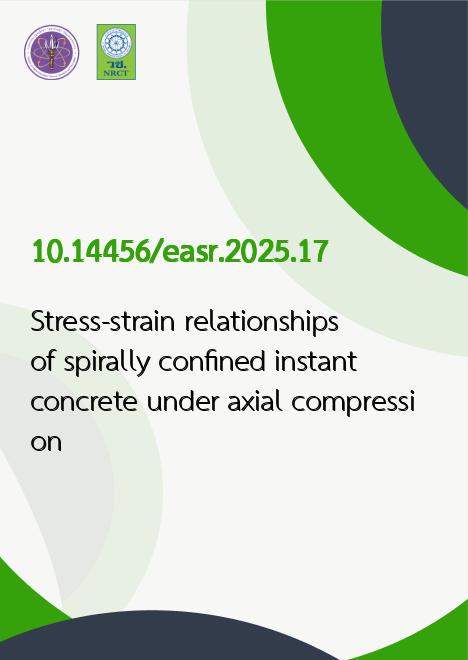
|
Stress-strain relationships of spirally confined instant concrete under axial compression |
|---|---|
| รหัสดีโอไอ | |
| Creator | 1. Mohammad Ghozi 2. Anik Budiati 3. Bambang Sabariman 4. Tavio 5. Slamet Widodo |
| Title | Stress-strain relationships of spirally confined instant concrete under axial compression |
| Publisher | Faculty of Engineering, Khon Kaen University |
| Publication Year | 2568 |
| Journal Title | Engineering and Applied Science Research |
| Journal Vol. | 52 |
| Journal No. | 2 |
| Page no. | 198-206 |
| Keyword | Concrete age, Confinement, Inelastic state, Spiral, Stress-strain relationship model |
| URL Website | https://ph01.tci-thaijo.org/index.php/easr/index |
| Website title | Engineering and Applied Science Research |
| ISSN | 2539-6161 |
| Abstract | Project activities require the strength of concrete to reach 100% at an age less than 28 days. Many manufacturers have created concrete with a strength that reaches 100% at an age less than 28 days; this product is called instant concrete. This instant concrete can be designed to attain 100% concrete strength at the ages of 7, 14, and 21 days. However, concrete is not only required to be strong; it must also be ductile. Ductility is usually measured after the concrete reaches its peak load phase, namely in inelastic conditions. Square or spiral stirrups can be used for concrete confinement to improve ductility. Spirals are a better confining system than square stirrups. The evidence for this can be seen from the relationship between concrete stress and strain. The concrete stress-strain relationship is necessary as a basis for reinforced concrete design assumptions. However, for instant concrete with a certain age, it is necessary to develop its specific stress-strain relationship model. Thus, this study aims to develop a stress-strain relationship model that can be used as a basis for assumptions in analysing confined concrete structural members. This study measured the concrete strength f'c at the ages of 7, 14, 21, and 28 days, and on average it reached the target f'c value; the stress-strain relationship tends to fit the Kent-Park model. Therefore, the design of reinforced concrete structural members for the ages of 7, 14, and 21 days can use the proposed stress-strain relationship model. |
